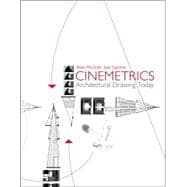
What is included with this book?
Jean Gardner is Senior Faculty, Department of Architecture, Interior Design and Lighting, Parsons. Her course ‘Issues and Practices in Architecture and Urbanism’ received special recognition in the 2005 National AIA Ecological Literacy Initiative. Co-chair of the ACSA Task Force on Sustainable Design, she helped organise ‘Sustainable Pedagogies and Practices’, the 2003 ACSA/AIA Teachers' Seminar. With The Rockwell Group, she exhibited ‘the Hall of Risk’, 2002 Venice Biennale.
| Now a Few Words from the Authors | |
| Introduction Losing Perspective, Finding Duration | |
| What happens when architectural drawing leaves the drawing board and moves to the computer screen? | |
| Framing | |
| What happens when movements are not in space and images not in our brains? | |
| Immobile Cuts | |
| How can we develop an architectural drawing system fro the intervals in matter-flux? | |
| Shooting | |
| What happens when we relate movement, not to privileged poses, but to any-instant-whatever? | |
| Mobile Sections | |
| How can we generate architectural spaces through drawing any-instant-whatever? | |
| Assembling | |
| What happens when the sensori-motor schema breaks down and perceptions no longer result in action? | |
| Cybernetic Seeds | |
| How can we generate space as seeds of different worlds in the making? | |
| Postscript Prologue to What is Possible | |
| Keywords | |
| Bibliography | |
| Index | |
| Table of Contents provided by Publisher. All Rights Reserved. |
The New copy of this book will include any supplemental materials advertised. Please check the title of the book to determine if it should include any access cards, study guides, lab manuals, CDs, etc.
The Used, Rental and eBook copies of this book are not guaranteed to include any supplemental materials. Typically, only the book itself is included. This is true even if the title states it includes any access cards, study guides, lab manuals, CDs, etc.